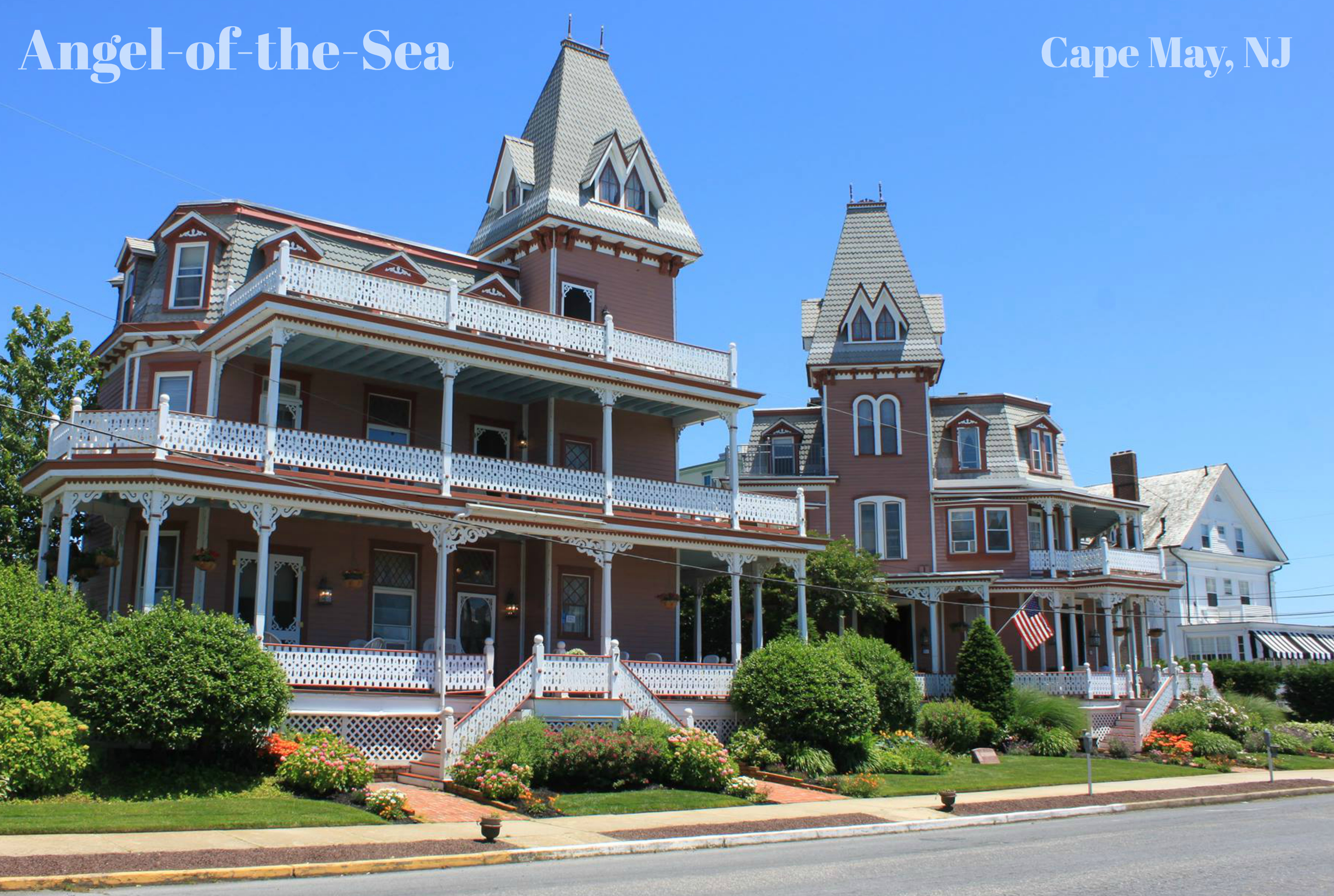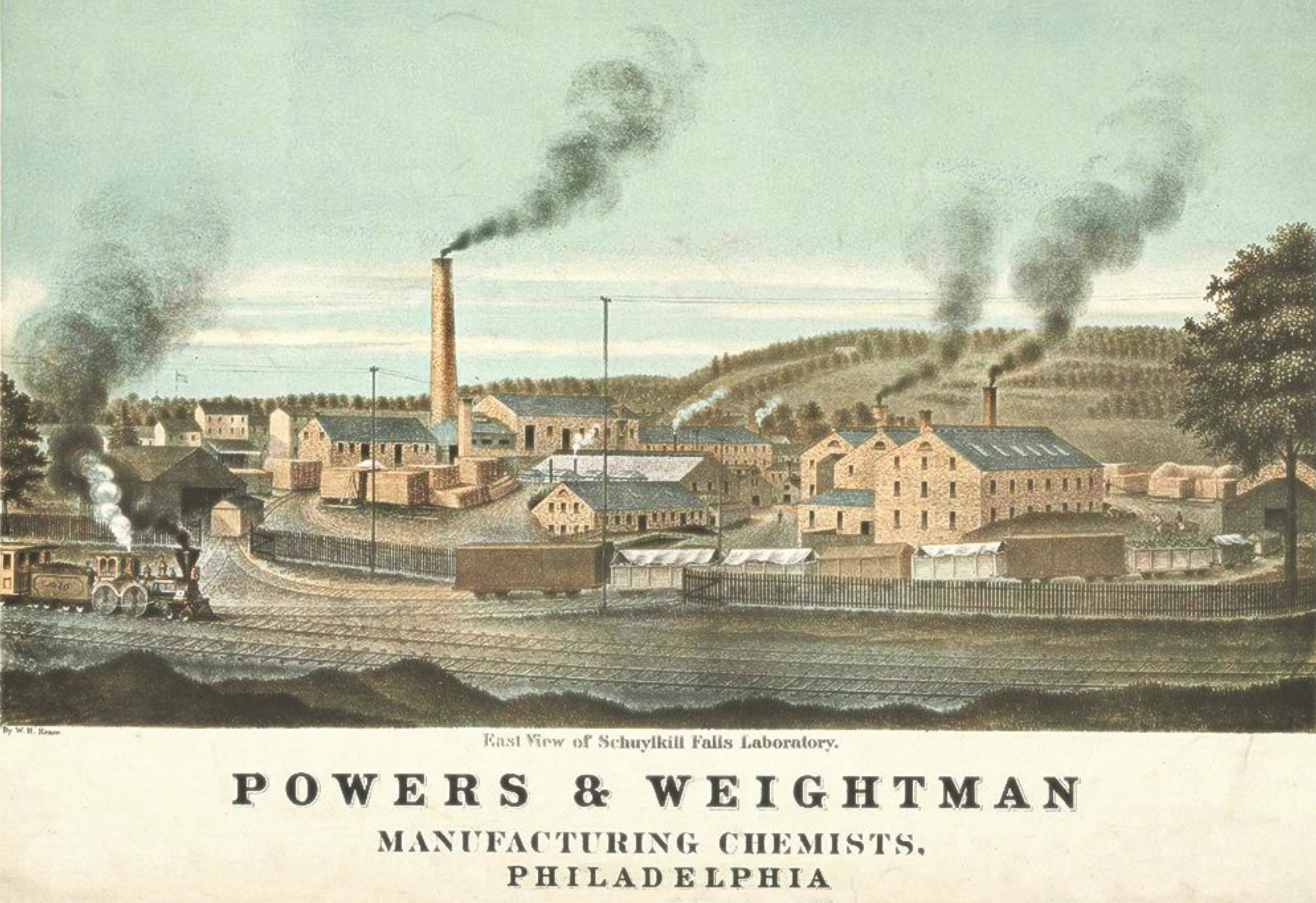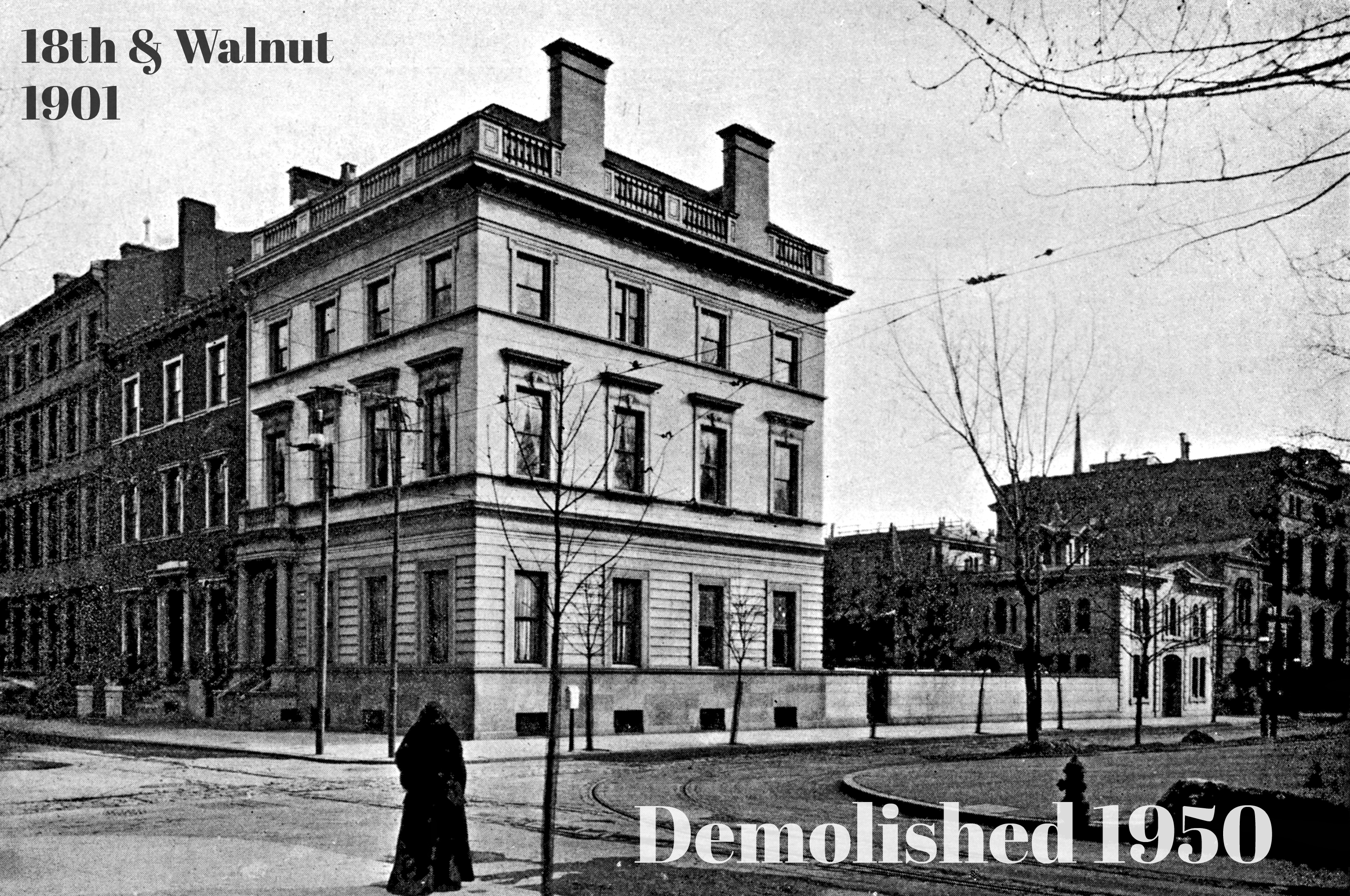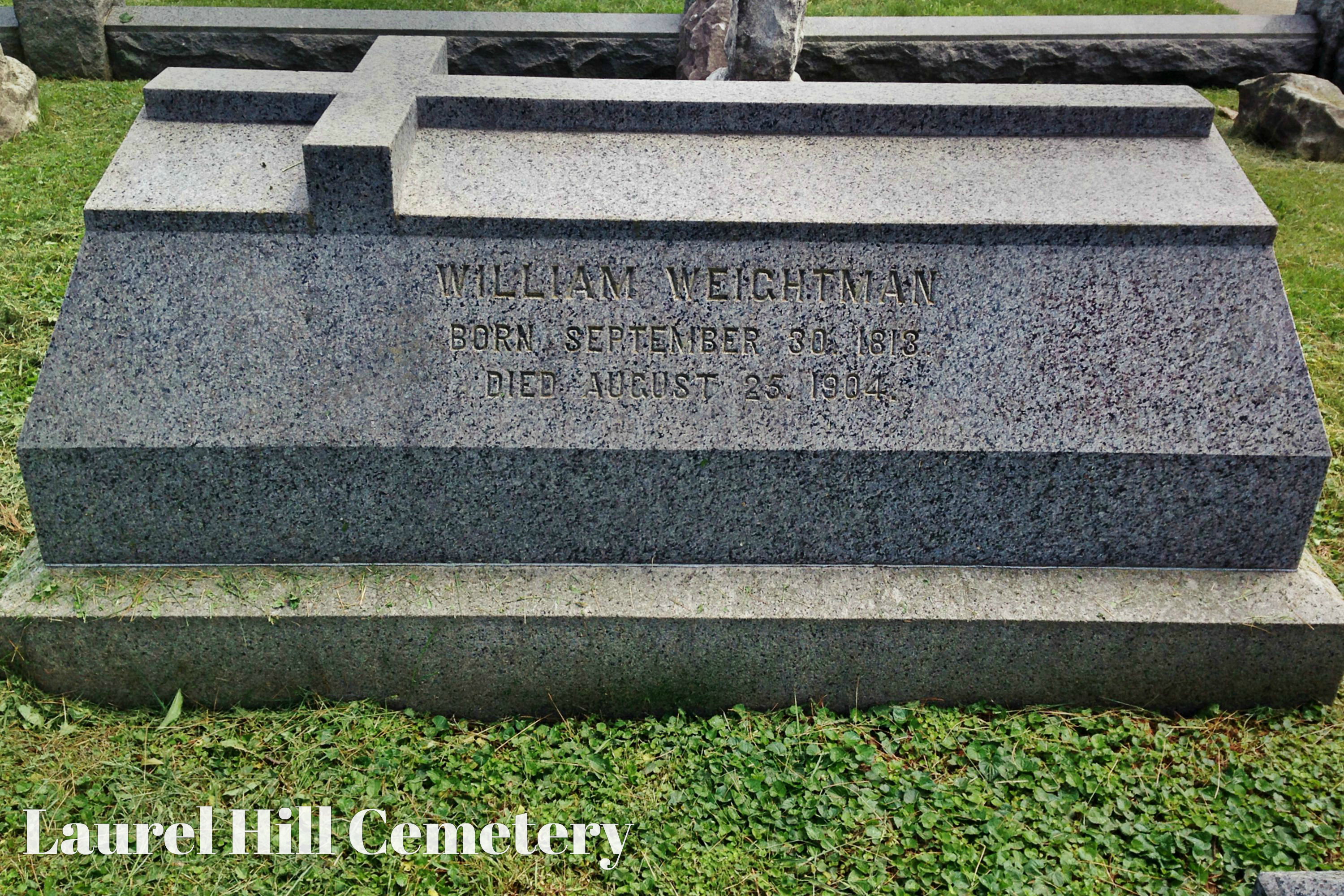William Weightman made his name in the pharmaceutical game as the “Quinine King,” and left an indelible architectural legacy in East Falls & surrounding Philadelphia.
East Falls’ William Weightman (1813-1904) was one of the wealthiest men in America at the time of his death, amassing a fortune worth over $51 billion in today’s money — CNN rated him #20 of the all-time richest Americans. Yet he is far less famous than his fellow fat cats like John D. Rockefeller and the Cornelius Vanderbilt.
The massive chemical and pharmaceutical plant known as Powers & Weightman was a family affair for William Weightman. His uncle, John Farr, came to America from England and introduced Seidlitz powder, a cure-all for tummy trouble. Shortly thereafter he founded Farr & Kunzi with Abraham Kunzi.
Weightman, who also arrived in America from England at the suggestion of his uncle, was hired at the growing chemical concern along with Thomas H. Powers, eventually becoming a top partner. By the time of Farr’s death in 1847, the company had relocated from Center City to greener pastures in East Falls. Nestled at the foot of School House Lane, the newly rebranded company of Powers & Weightman would eventually become one of the largest chemical manufacturers in the world.
Powers & Weightman was one of only two American pharmaceutical plants that produced the malaria cure, quinine (the other was Rosengarten & Zeitler, also of Philadelphia). William Weightman invented a new, cheaper synthetic form of the drug. With the outbreak of the Civil War, Powers & Weightman’s near monopoly of quinine proved to be a huge boon for the company, becoming a major supplier to Union forces. After the commencement of hostilities, the two chemical titans merged.
Not one to sit on his laurels, Weightman parlayed his new found wealth into another financially successful venture, real estate. Within a short period of time he would become the largest individual owner of real estate in Philadelphia, building row homes on former North Philadelphia farmland. He also had similar success building houses in West Philadelphia, with first class quality homes near Penn and Drexel’s booming universities.
Much like his chemical plant, real estate was a family affair for Weightman. One of his chief go-to architects was Willis G. Hale (1848-1907), a budding young draftsman who had married one of his nieces. It turned out to be quite a lucrative connection for Hale, receiving many commissions from his uncle and other top builders in the city (one of Hale’s most well-known buildings is North Philly’s Divine Lorraine).
Hale, known for his flamboyant Victorian panache and often compared to Frank Furness, is credited with designing Ravenhill (1887), the Weightman mansion on School House Lane. This marvelous residence, executed in a fanciful Elizabethan style, played a greater role in East Falls history after the death of the Quinine King.
His daughter, Anne Marie Walker Penfield, inherited the vast fortune of her father — she was dubbed “The Woman Midas” and the NY Times called her one of the wealthiest women in the world! She eventually gave Ravenhill Mansion to the Archdiocese of Philadelphia for a girls’ school in 1919 (Grace Kelly attended school here). The Sisters of the Assumption ran the school until 1977, after which it was given to the Philadelphia College of Textiles and Sciences (now Philadelphia/Jefferson University) as the center of the Ravenhill Campus. Luckily this architectural gem survives to the present day, intact and fairly unmolested.
The same can’t be said for Weightman’s Rittenhouse Square dwelling, a three-story affair that occupied the southeast corner of 18th and Walnut, demolished c. 1950 for the Rittenhouse Claridge Apartments. Despite his fancy digs on fashionable Rittenhouse Square, Weightman was said to have not taken part in any high-society shindigs, shunning his Gilded Age brethren for the tranquility and leisurely pace of life at Ravenhill, where he tended to his exotic garden of rare plants and flowers.
It was common for Philadelphia’s wealthy elite to build extravagant summer retreats in Cape May, and William Weightman was not to be outdone. Around 1850 he built his prized cottage on the corner of Franklin and Washington Streets. Wanting better ocean views for his friends and family, the magnificent resort house was relocated in 1881 at the behest of the owner’s son, William, Jr. In the process of moving, the house was split in two halves and cobbled together into its current form.

The cottage remained in the Weightman family until the mid-twentieth century. It went through a number of uses (and abuses) until it was declared uninhabitable. By the 1980s the Weightman Cottage by the sea was abandoned and covered in graffiti.
Beginning in 1989 a massive restoration project brought the once-luxurious house back from the dead. The cottage is now maintained as the Angel-of-the-Sea Bed & Breakfast and is one of the showpieces of Cape May (ed note: also it’s rumored to be haunted by a young girl’s ghost!)
Despite his relative anonymity today, William Weightman was very well known and admired in his day, even warranting inclusion in Moses King’s big book of fuzzy faces (Philadelphia and Famous Philadelphians, 1901). Weightman died at his beloved Ravenhill on August 28th, 1904 at age 91.
His funeral, a rather simple and unostentatious affair given his massive fortune, was attended by the who’s who in Philadelphia high society. Over 100 mourners gathered around his grave at Laurel Hill cemetery, which is marked by an unassuming granite memorial.
Perhaps it was his shunning of the limelight that led to Weightman’s fading into the shadows, but his genius and business savvy help to create a company that thrives to this day. In 1927 the chemical company that he helped to grow merged with Merck & Co., a huge player in the pharmaceutical game with a large local presence.










Very interesting article, I was born in 1962 to Jane and Cecil Weightman , My grandfather was Roy Weightman, I was told the story Of William Weightman and I believe that was is was my Great Grandfather. if possible I would like to know if there are any relatives still living in the area of Philadelphia. I was also told that he was a Dr. in the state of Ky at one time and went by the name Yorki short for Yorkshire England from whence he was born. Any info would be greatly appreciated.
Thank you
I’ve been searching the Weightman line for over 16 years. My husband uncle was a Roy Weightman from Philly. I connected us to William Weightman via his brother a John on a ship from England.
John Farr is my 3rd great grandfather. He is often described as William Weightman’s uncle who encouraged William emigrate from England. We know little about John Farr other than as it relates to starting this business and some references in family diaries. Members of the Farr family continue to live in the Philadelphia area. My mother was born there and I live north of Philadelphia now. As we are apparently related to the Weightmans, if any of you have information about where in England the family was from or which of William’s parents was a sibling of John Farr, I would appreciate it if you would post it here.
I traced John and William back to England arriving on a ship together in Philadelphia. John is my husbands line. Weightman and Powers was across road from ridge Avenue where we find our John who married a woman with a child who was my husbands grandmother. The family was Shronk. Our John is a pretty tight fit for Williams brother John found in a ship and tha name John goes down the line. I think it’s uncanny that my husband and Gus siblings gave the same eyes as William. The bone structure under the eyes too.